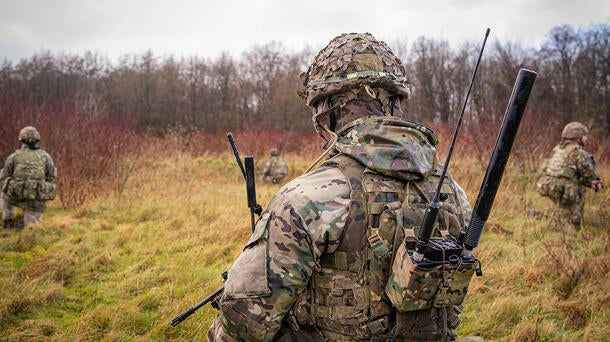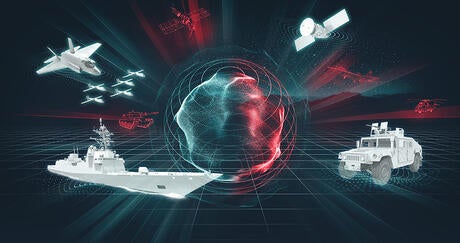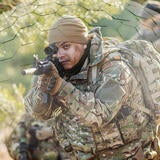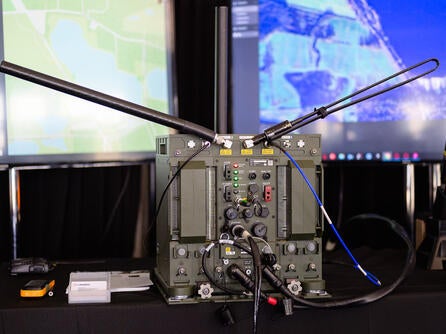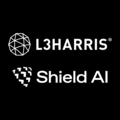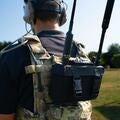The time between the initial deployment of a new EW capability to the realization of active countermeasures against threats in the electromagnetic operating environment (EMOE) can take months, well outside the timeline needed for mission effectiveness on the battlefield.
Modern-day conflicts now demand EW capabilities that can be adopted quickly by individual users. NATO and allied forces deserve rapid, agile innovation that helps them maintain an operational advantage against peer adversaries employing advanced threats.
Arm Soldiers with Agile, Adaptable Tech
NATO and allied soldiers need access to robust, affordable and adaptable electronic surveillance and electronic attack capabilities. These include traditional force protection electronic countermeasures (ECM) such as counter-improvised explosive devices (C-IEDs) and important capability against uncrewed systems in the air and on the ground, including first-person video (FPV) drone weapons.
At the same time, it has become critical for deployed solutions to be able to adapt rapidly to meet evolving threats, and incorporate real-world combat lessons and experience. This mode of learning and adaptation is a long tradition among soldiers on the battlefield, and operating in the EMOE should be no exception.
Such “trench EW” capability should be simple and easy to use while having a minimal burden on the user and logistics chain. For example, software-defined solutions now allow one system to meet many threats, and to be reconfigured via software updates to adapt to new threats—an improvement over the more traditional “one-box-per-threat” approach.
Additionally, modern-day EW solutions must have the ability to sense as well as provide effects. This will enable soldiers to support a much broader range of missions. These span everything from surveying the local radio frequency (RF) environment to transmitting a suitable waveform against a hostile uncrewed aircraft system (UAS).
ICN: A Compact, Multirole EW Solution
L3Harris offers a small form factor EW system ideal for such a scenario – the Individual CORVUS Node (ICN). Weighing less than 2 kg, it can be easily integrated into a soldier’s load-carrying equipment. A next-generation software-defined radio, ICN is built on an open standards-based architecture and covers the EMOE from 20 MHz to 6 GHz. This design makes it possible to achieve multirole, multifunction and multidomain EW capability from a single system.
The ICN supports counter-IED, counter-small UAS, electronic surveillance, electronic attack, communications intelligence and cyber effects. It can also be tailored to specific missions through the addition of a variety of general and specialist antennas. Moreover, the ICN can be integrated with third-party applications or networked into battle management systems as required.
DiSCO™: Enabling Spectrum Dominance
L3Harris is also developing an integrated, enterprise-level EMSO architecture known as Distributed Spectrum Collaboration and Operations (DiSCO). DiSCO reduces uncertainty during the fog of war in modern threat environments. By connecting the tactical edge with advanced artificial intelligence and machine learning processing, as well as cloud-connected command and control (C2) in real-time, DiSCO enables faster responses to unknown threats. The result is improved situational awareness and jamming responses – updated within minutes versus months – and the ability to orchestrate non-kinetic effects at scale.
Both DiSCO and the ICN offer the realization of a modern-day “trench EW” system by providing soldiers the agile, advanced EW technology they need to operate effectively in the EMOE, maximizing survivability and freedom of manoeuvre.
